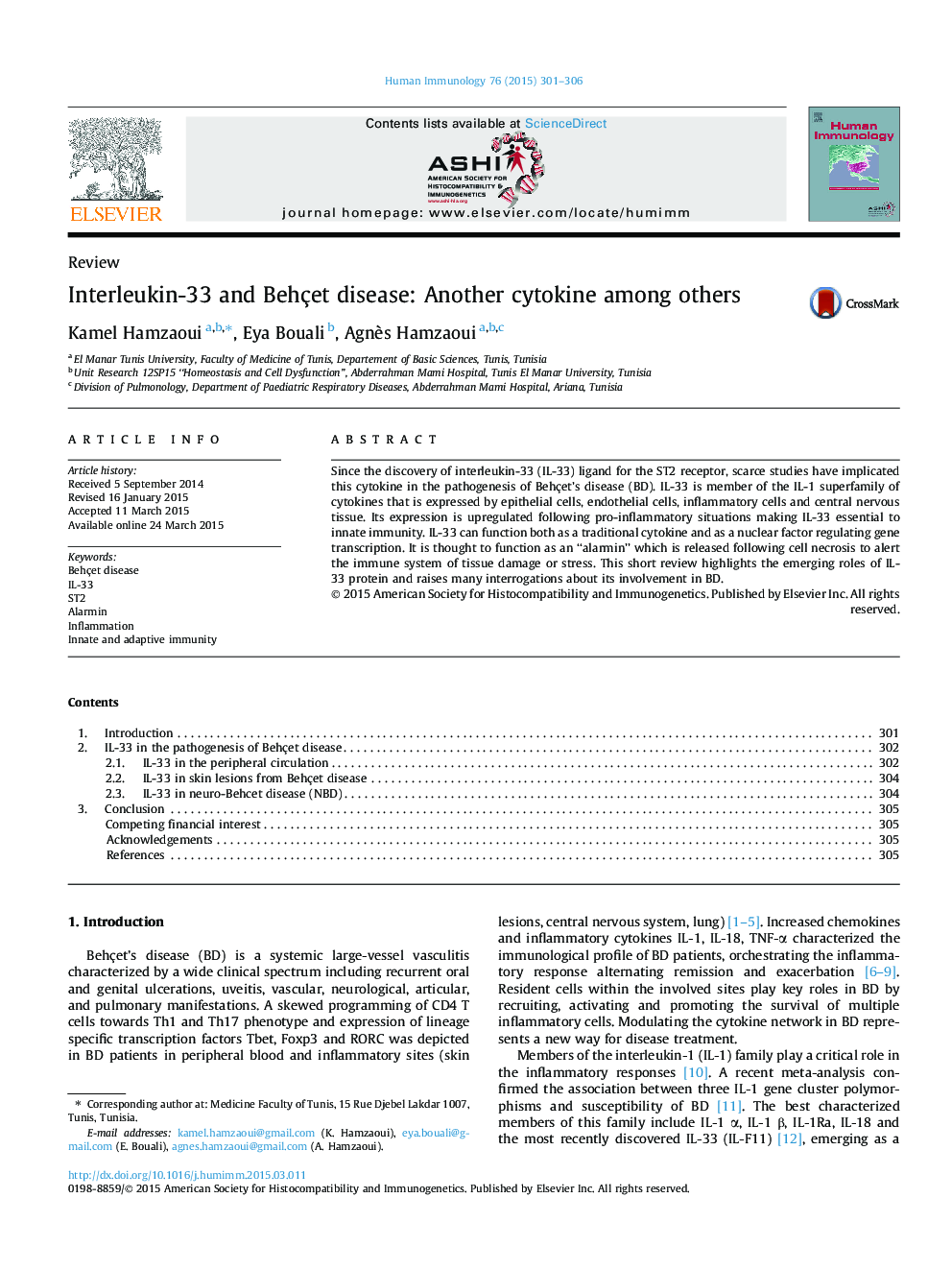| Article ID | Journal | Published Year | Pages | File Type |
|---|---|---|---|---|
| 3349956 | Human Immunology | 2015 | 6 Pages |
Since the discovery of interleukin-33 (IL-33) ligand for the ST2 receptor, scarce studies have implicated this cytokine in the pathogenesis of Behçet’s disease (BD). IL-33 is member of the IL-1 superfamily of cytokines that is expressed by epithelial cells, endothelial cells, inflammatory cells and central nervous tissue. Its expression is upregulated following pro-inflammatory situations making IL-33 essential to innate immunity. IL-33 can function both as a traditional cytokine and as a nuclear factor regulating gene transcription. It is thought to function as an “alarmin” which is released following cell necrosis to alert the immune system of tissue damage or stress. This short review highlights the emerging roles of IL-33 protein and raises many interrogations about its involvement in BD.
